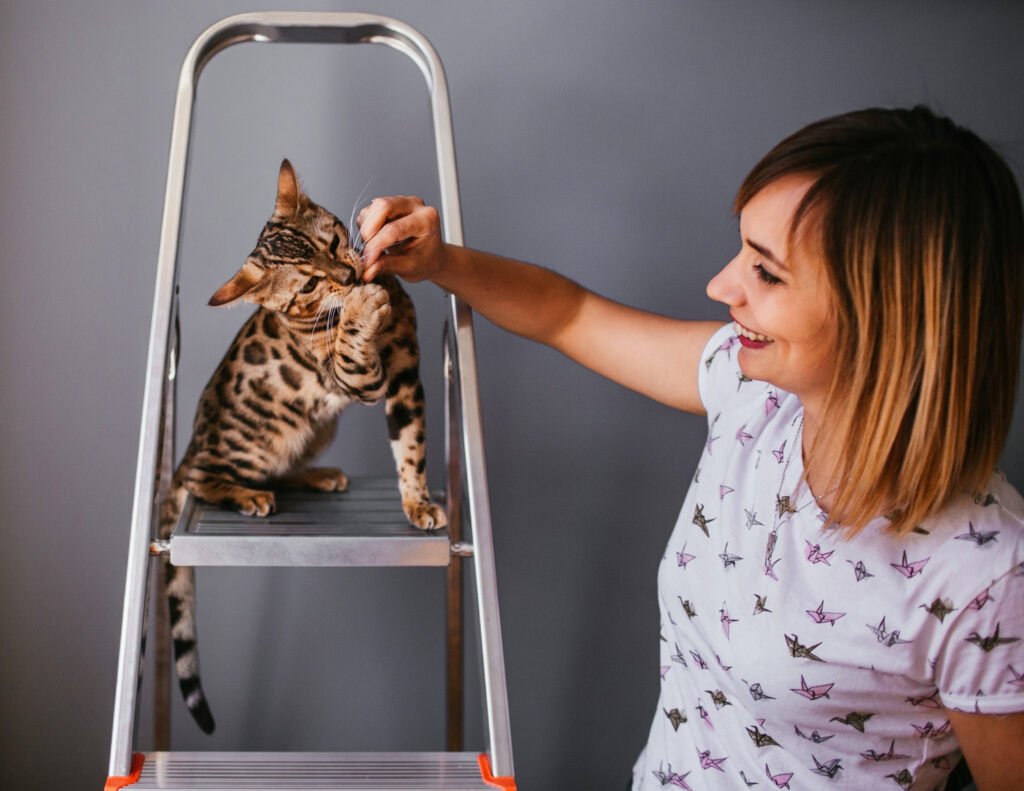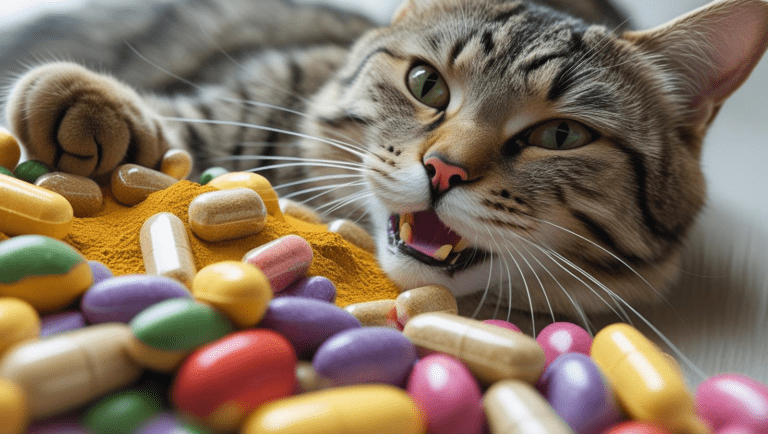Cats are known for their independent nature, but some felines seem to take the opposite approach and follow their owners everywhere. From the moment you wake up to the time you settle down for the night, they’re right by your side, demanding attention and companionship. If you’ve found yourself wondering, “Why does my cat follow me everywhere?” you’re not alone. This behaviour can be puzzling, especially for those who expect cats to be more solitary. In this article, we’ll explore why some cats exhibit clingy behaviour, the factors contributing to it, and how you can handle this behaviour without compromising your cat’s happiness or your own.
1. Understanding Clingy Cat Behavior
Clingy behaviour in cats is not uncommon, but it can vary from one cat to another. Some cats prefer solitude, while others crave attention. This behaviour can be endearing but may also be a sign of underlying issues that require your attention. A clingy cat will follow you from room to room, rub against your legs, sit on your lap whenever possible, and may even vocalise frequently to get your attention. While this type of behavior is typically harmless, understanding its root cause is important to determine whether it’s a natural part of your cat’s personality or a sign of something else.
2. Reasons for Clingy Behavior in Cats
There are several reasons why your cat might be following you everywhere. Let’s explore some of the most common causes:
a. Bonding and Attachment
Cats form strong emotional bonds with their owners, especially if they have been with you since kittenhood. Cats that follow their owners around may simply be showing their affection. They see you as a source of comfort, security, and food, and by staying close, they feel safe and reassured. This behavior is often seen in indoor cats who rely on their owners for companionship.
b. Seeking Attention
Cats are creatures of habit, and when they discover that certain actions get them the attention they crave, they repeat those actions. If your cat realizes that following you leads to petting, playtime, or treats, it will likely repeat this behavior to seek attention. Cats may also meow or paw at you when they want to be noticed, reinforcing the idea that sticking close will get them what they want.
c. Curiosity
Cats are naturally curious animals. They want to know what’s going on in their surroundings, and if you’re constantly moving around, they may follow to investigate. This is especially true if you’re doing something new or interesting, such as cooking, working on a project, or even packing a suitcase. They want to be part of whatever is happening and ensure they’re not missing out.
d. Routine and Expectation
Cats thrive on routine, and they quickly learn when certain activities occur, such as feeding or playtime. If you’ve established a daily routine that your cat associates with enjoyable experiences, they may follow you in anticipation of those activities. For instance, if you always feed your cat at a specific time or location, they may follow you as soon as they sense it’s time for dinner.
e. Separation Anxiety
Though separation anxiety is more commonly associated with dogs, some cats can also develop this condition. Cats that suffer from separation anxiety become anxious when their owners are out of sight or leave the house. This may result in your cat following you closely whenever you’re home, as they fear being left alone. Signs of separation anxiety in cats include excessive meowing, destructive behavior, and changes in eating or litter box habits.
f. Boredom or Lack of Stimulation
Cats that are bored or lack mental stimulation may follow their owners as a way to relieve their boredom. Indoor cats, in particular, may not have enough opportunities to exercise their hunting instincts or engage in physical activity. In this case, following you is their way of finding entertainment and breaking up the monotony of their day.
g. Health Issues
In some cases, clingy behavior can be a sign of an underlying health issue. Cats that feel unwell or in pain may seek comfort and reassurance from their owners. If your cat’s behavior changes suddenly and becomes more clingy than usual, it’s a good idea to have them checked by a vet to rule out any medical concerns.
3. Is Clingy Behaviour a Problem?
For most people, a cat’s clingy behaviour is harmless and can even be flattering. However, there are situations where it can become problematic:
- Disruption of Daily Activities: A clingy cat may constantly demand attention, making it difficult for you to focus on other tasks or relax.
- Increased Stress for the Cat: If the cat is following you out of anxiety or boredom, the underlying cause should be addressed to ensure the cat’s mental well-being.
- Health Concerns: Sudden changes in behavior, including increased clinginess, may signal a health issue that needs medical attention.
If the clingy behavior is interfering with your daily life or causing distress for your cat, it may be time to take action.
4. How to Handle a Clingy Cat
There are several strategies you can use to manage clingy behavior in a healthy way:
a. Encourage Independence
Encourage your cat to become more independent by gradually reducing the amount of attention you give them when they follow you. Set aside specific times for play, petting, and bonding, but allow them to entertain themselves at other times. Offering them toys, puzzles, and scratching posts can help them stay occupied without relying on your presence.
b. Provide Mental Stimulation
Boredom is a common cause of clinginess, so it’s important to ensure your cat has plenty of mental and physical stimulation. Interactive toys, laser pointers, and puzzle feeders can engage their hunting instincts and keep them entertained.
c. Establish Routines
Cats feel more secure when they know what to expect. Establish a consistent routine for feeding, playtime, and relaxation to help your cat feel more settled. By creating predictable patterns, your cat will be less likely to follow you out of uncertainty.
d. Address Anxiety Issues
If you suspect your cat’s clinginess is due to separation anxiety, try to gradually desensitize them to your absence. Start by leaving them alone for short periods and gradually increase the time. You can also create a comforting environment by providing a cozy bed, calming pheromones, or playing soothing music when you’re away.
Conclusion
If your cat follows you everywhere, it’s likely a sign of affection, curiosity, or a desire for companionship. While this behavior can be endearing, it’s essential to understand the reasons behind it and ensure that it doesn’t stem from anxiety, boredom, or health issues. By encouraging independence, providing mental stimulation, and maintaining a consistent routine, you can help your cat feel secure and happy without being overly dependent on your presence.





